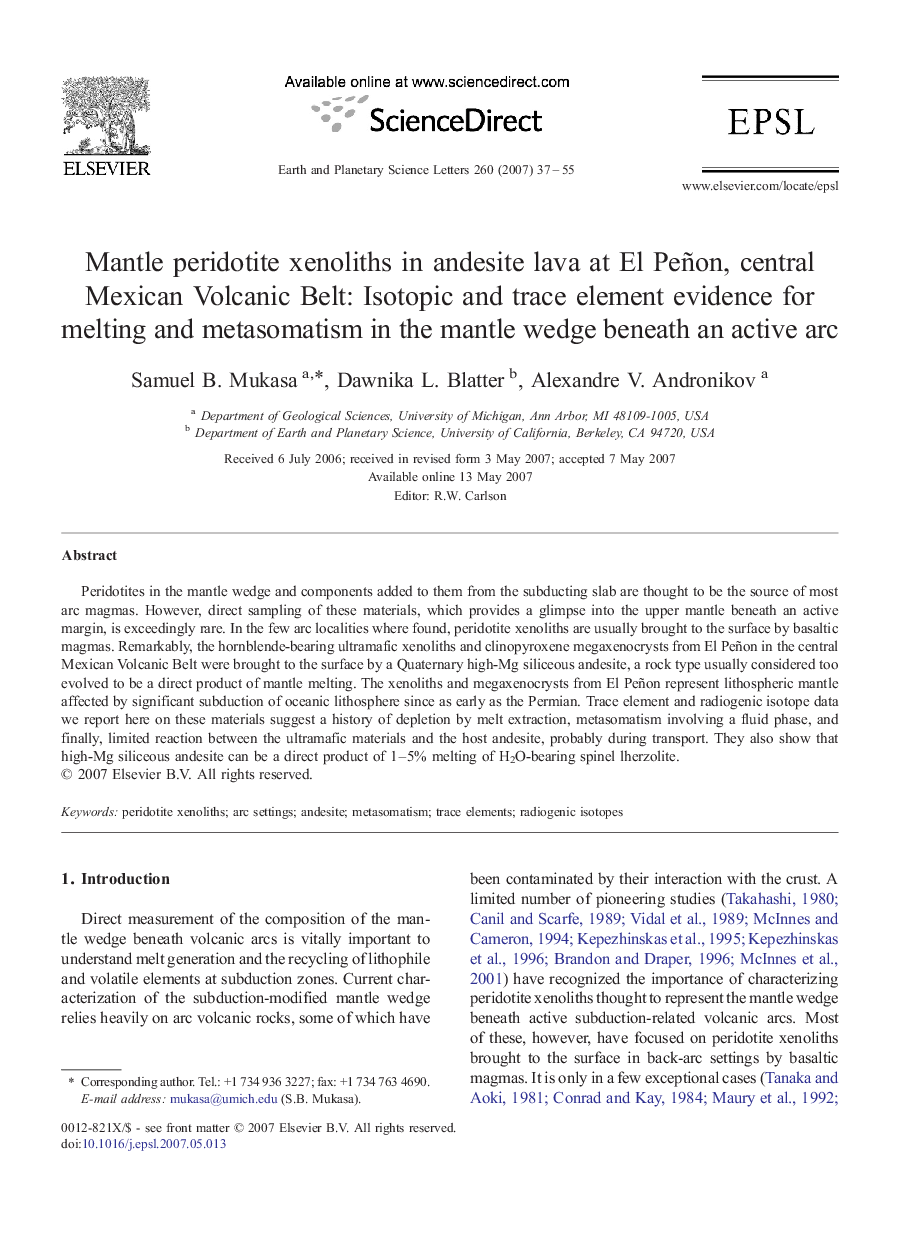| Article ID | Journal | Published Year | Pages | File Type |
|---|---|---|---|---|
| 4680249 | Earth and Planetary Science Letters | 2007 | 19 Pages |
Peridotites in the mantle wedge and components added to them from the subducting slab are thought to be the source of most arc magmas. However, direct sampling of these materials, which provides a glimpse into the upper mantle beneath an active margin, is exceedingly rare. In the few arc localities where found, peridotite xenoliths are usually brought to the surface by basaltic magmas. Remarkably, the hornblende-bearing ultramafic xenoliths and clinopyroxene megaxenocrysts from El Peñon in the central Mexican Volcanic Belt were brought to the surface by a Quaternary high-Mg siliceous andesite, a rock type usually considered too evolved to be a direct product of mantle melting. The xenoliths and megaxenocrysts from El Peñon represent lithospheric mantle affected by significant subduction of oceanic lithosphere since as early as the Permian. Trace element and radiogenic isotope data we report here on these materials suggest a history of depletion by melt extraction, metasomatism involving a fluid phase, and finally, limited reaction between the ultramafic materials and the host andesite, probably during transport. They also show that high-Mg siliceous andesite can be a direct product of 1–5% melting of H2O-bearing spinel lherzolite.
